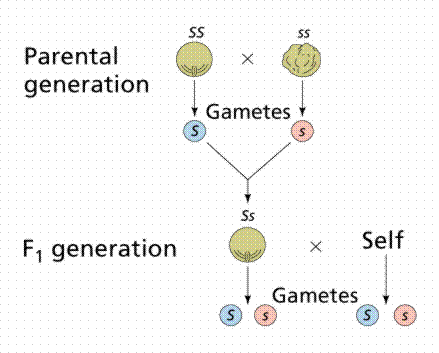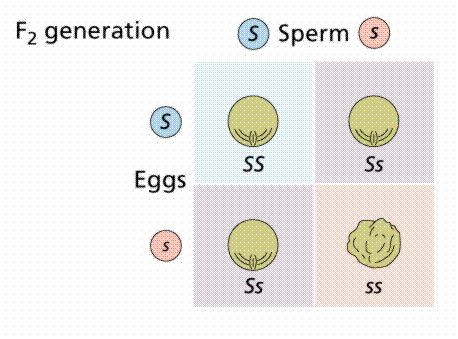
PUNNETT SQUARES
Punnett squares seem to give a lot of people trouble, but once you get the hang of them, they seem infinitely easy. First of all, from Mendel's first test, we know that we have two copies of each gene. In a monohybrid cross, that means that both parents have two copies of a gene to contribute to the F1 generation. In Mendel's first experiment, both parents were homozygous for a specific trait. One parent was homozygous dominant (SS) and the other parent was homozygous recessive (ss). Since either of a parent's genes has a 50/50 shot of being given to the offspring, and both choice are the same, there was no need to do a Punnett square.

However, since all of the F1 generation were receiving both a S and a s from their parents, every individual in the F1 generation was heterozygous, or Ss. That means that a Punnett square would be necessary to statistically determine the probability of receiving specific traits.

The F2 generation could be any of 3 possibilities; homozygous dominant (SS), homozygous recessive (ss), or heterozygous (Ss). Since heterozygous individuals have a dominant phenotype, then a 3:1 ratio of dominant to recessive phenotypes would be evident.
![]() If
you're having trouble understanding dihybrid Punnett Square, click here.
If
you're having trouble understanding dihybrid Punnett Square, click here.![]()
| Introduction to Mendel | | Monohybrid Cross | | Dihybrid Cross | | Punnett Squares |